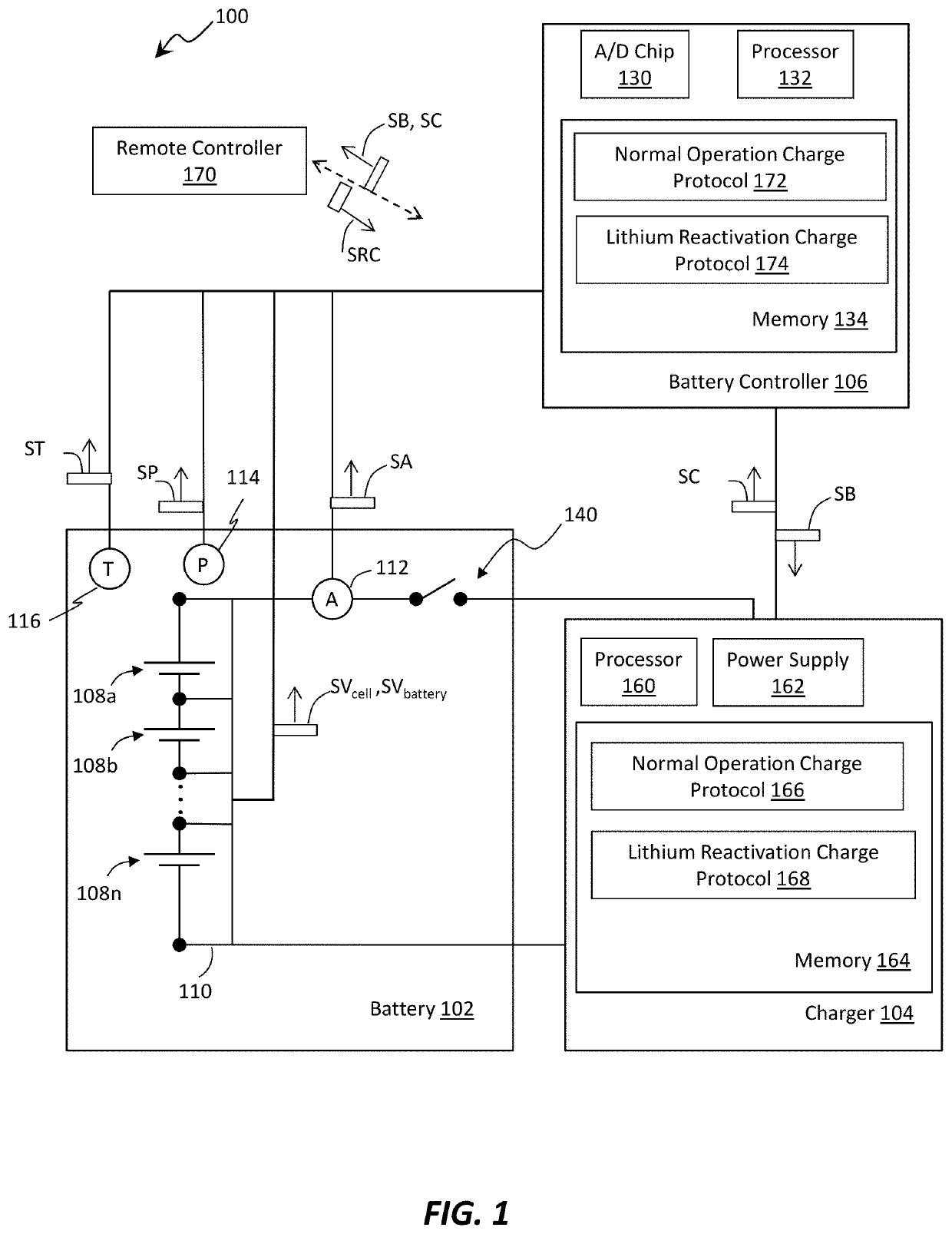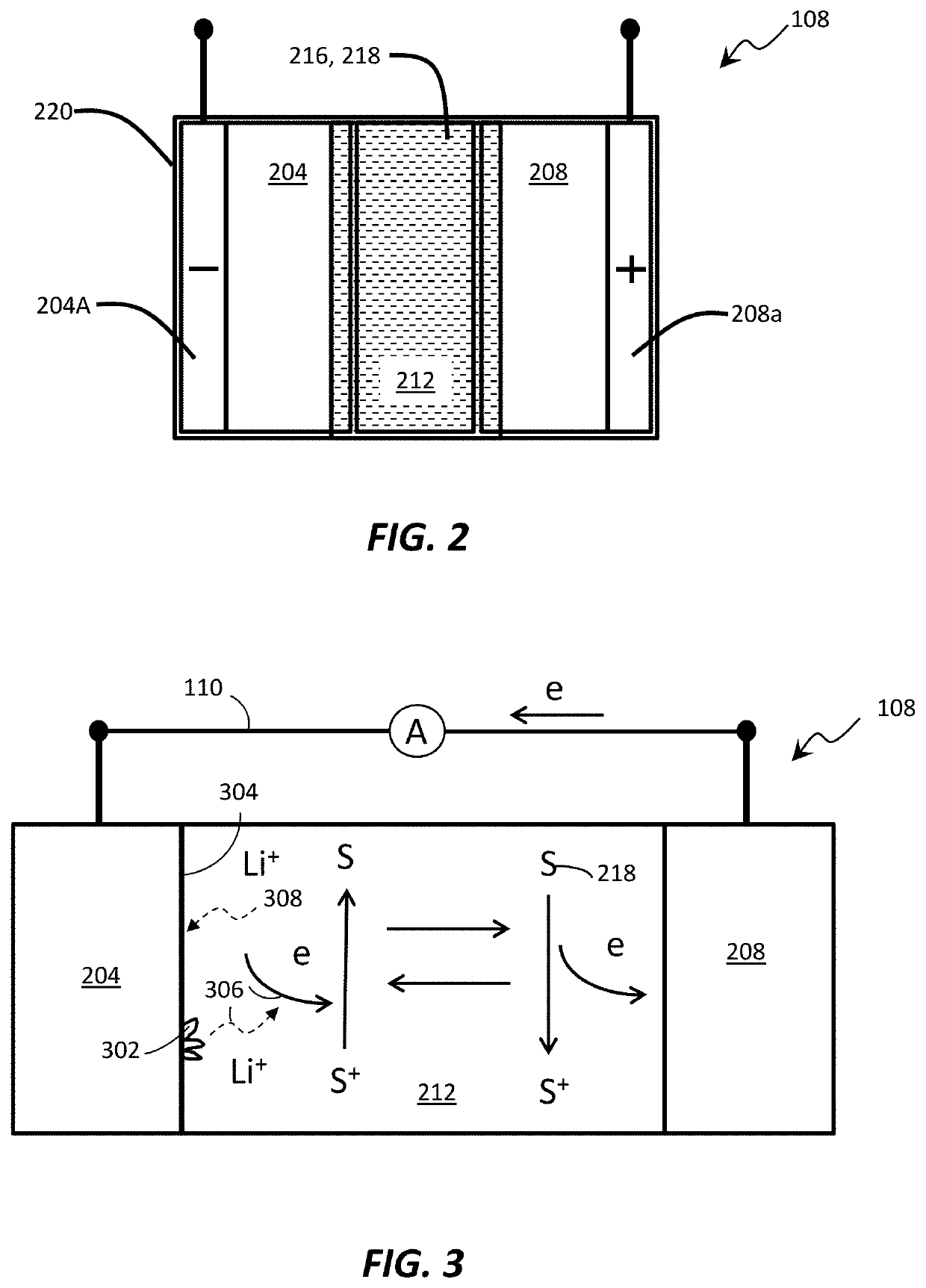Methods of charging secondary lithium metal batteries to reactive dead lithium with redox shuttling additives and battery control systems incorporating the same
- Summary
- Abstract
- Description
- Claims
- Application Information
AI Technical Summary
Benefits of technology
Problems solved by technology
Method used
Image
Examples
example 1
nal Lithium Ion Battery Electrolyte
[0048]FIG. 6 illustrates test data from an example test of coin cells using 20 μm thick thin lithium anode and NMC cathode built with 1.2M LiPF6 / EC:EMC=3:7 with or without 0.2M DBBB shuttling additive. The cells were cycled by charging to 4.0V and discharged to 2.5V under 0.1 C rate. As indicated in FIG. 6, cells without DBBB additive exhibited 7 cycles with stable delivered capacities before showing the significant drop on delivered capacities (discharge capacity curves 602). While cells with DBBB additive delivered slightly lower capacities during cycling due to the DBBB shuttling additive activation (100% overcharge control) at ˜3.9V, but with ˜23-25 cycles stable capacities delivery before the dropping of the delivered capacities in the later cycles (discharge capacity curves 604). The average lithium cycling coulombic efficiency per cycle is estimated to be improved from ˜77% for the control cells to 90.5% for the testing cells with DBBB addit...
example 2
entration Electrolyte for Li Metal Anode
[0049]To demonstrate the impact of a shuttling additive on the stability of a lithium metal rechargeable cell system, the same coin cells as in Example 1 were built using a 2M LiFSI / FEC:EMC=2:8 electrolyte that provides more stable lithium metal cycling, either without the DBBB additive (control 2 (702), control 4 (704)) or with 0.2M DBBB additive (DBBB-2 (706), DBBB-3 (708)). The cells were charged at 0.2 C rate to 3.9V and discharged at 1.0 C rate to 2.5V. Due to the presence of DBBB, the testing group cells 706, 708 were partially overcharged at each cycle before reaching 3.9V due to the DBBB activation at around 3.85V in this electrolyte. The charging capacity and discharging capacity are shown in FIGS. 7 and 8, respectively. Although the charging capacities for cells 706, 708 with DBBB additive in the initial 100 cycles are much higher than the control cells 702, 704 (FIG. 7), the actual stored capacity is lower, as represented by the low...
PUM
 Login to view more
Login to view more Abstract
Description
Claims
Application Information
 Login to view more
Login to view more - R&D Engineer
- R&D Manager
- IP Professional
- Industry Leading Data Capabilities
- Powerful AI technology
- Patent DNA Extraction
Browse by: Latest US Patents, China's latest patents, Technical Efficacy Thesaurus, Application Domain, Technology Topic.
© 2024 PatSnap. All rights reserved.Legal|Privacy policy|Modern Slavery Act Transparency Statement|Sitemap



